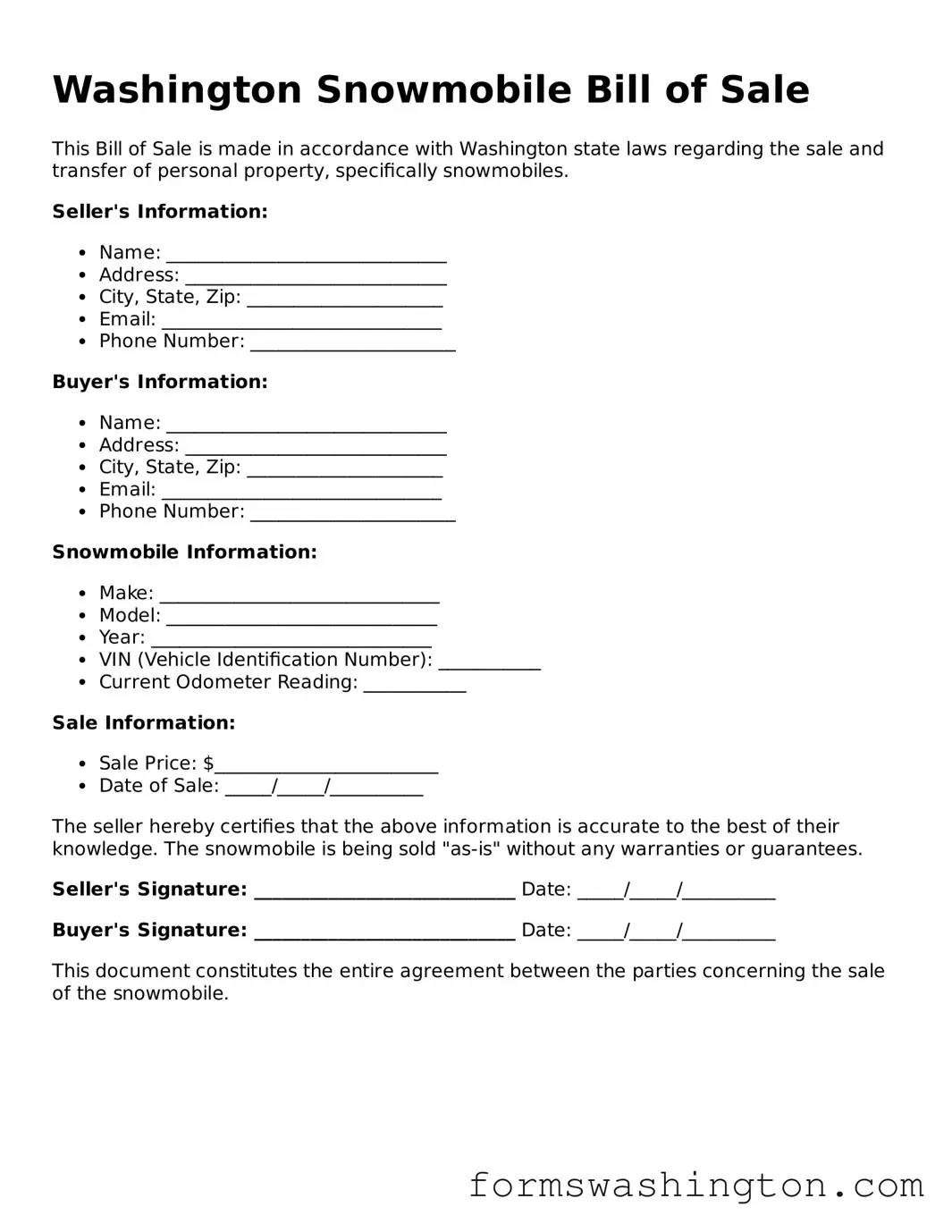Blank Snowmobile Bill of Sale Template for Washington State
The Washington Snowmobile Bill of Sale form is a legal document that facilitates the transfer of ownership for snowmobiles in the state of Washington. This form serves as proof of the transaction between the seller and the buyer, ensuring that both parties have a clear record of the sale. Understanding its importance can help prevent disputes and clarify ownership rights.
Open Editor Here
